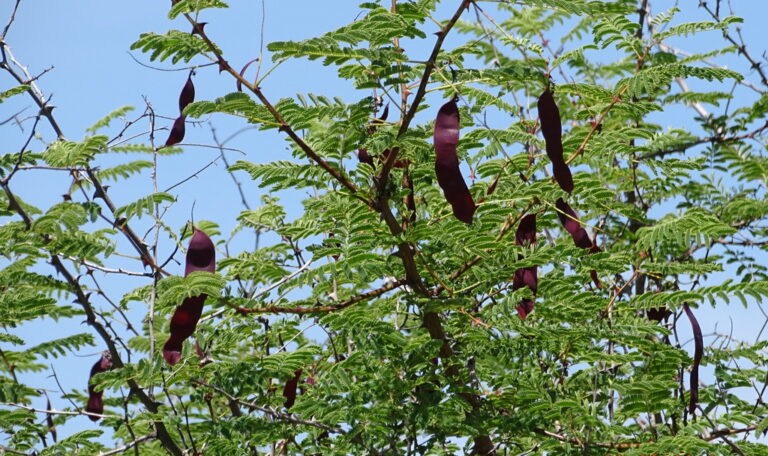Botanical name: Senegalia catechu | Hin खैर | Marathi:

About
Khair, also known as खैर and scientifically as Senegalia catechu, is a deciduous, thorny tree reaching up to 15 meters tall. Its smooth, grey bark peels off in flakes, revealing an orange-red underlayer. Leathery, compound leaves provide shade, while delicate yellow flowers bloom in clusters during spring. Black, pod-like fruits containing brown seeds follow. Khair thrives in diverse environments, from dry forests to riverbanks, adapting to both hot and humid climates.
Interesting Facts



Anandvan Trivia Quiz
Question 1: What is the good and the bad about the dye I produce?
Answer: The natural dye extracted from the Khair tree boasts both impressive benefits and potential drawbacks. On the positive side, it’s a naturally sourced, eco-friendly alternative to synthetic dyes. It produces a unique range of earthy brown shades, from light tan to deep chocolate, appealing for textiles and leather goods. Additionally, the dye holds antibacterial and anti-fungal properties, potentially enhancing the longevity and protection of dyed materials. However, there are challenges. Khair dye can be labor-intensive to extract and fix, making it costlier than some synthetic options. Depending on the processing method, the color may not be lightfast and could fade over time. Moreover, the dye sometimes requires the use of mordants, chemicals that can raise environmental concerns. Ultimately, while Khair dye offers a sustainable and beautiful option, its limitations necessitate careful consideration for specific applications.
